Contamination in the carts
What exactly is “contamination”?
It's vital to only put the right materials in your blue, green, and black carts.
Contamination puts workers at risk, damages equipment and increases program costs for all Calgarians.
Sorting and preparing your waste the right way means that materials end up at the right facility and keeps workers and equipment safe.
Contamination is when the wrong items are put in the wrong bins.
Contamination: safety hazards
Improper sorting creates major safety hazards for collectors and facility staff at composting, recycling, and landfill sites. When these incidents occur, work often stops immediately to manage the danger. In serious cases, emergency services (911, EMS, and Fire) must be called, using up valuable resources.
Many of these issues can be prevented by disposing of items properly.
Safety hazards
Safety hazard
Batteries
This burnt-out battery caused a fire at the Spyhill landfill.
Take to a battery disposal drop-off.
Batteries can get compacted in the garbage truck or other equipment. If casing breaks open, the battery chemicals react with the air, creating high heat and fire hazards. Take to a battery disposal drop-off.
Safety hazard
Bear spray
This bear spray canister released chemicals into the recycling facility.
Take to a household hazardous waste drop-off or City Eco Centre.
Even empty, bear spray canisters still hold residue chemicals that can be very harmful for people when punctured by the sorting equipment.
Safety hazard
Needles and syringes
This large bag of needles was improperly disposed of in the blue cart.
Put needles into a puncture-proof container (eg. bleach bottle). Seal the container, label as ‘sharps’ and put into the garbage.
Needles must be safely disposed of to prevent staff from being pricked by a used needle.
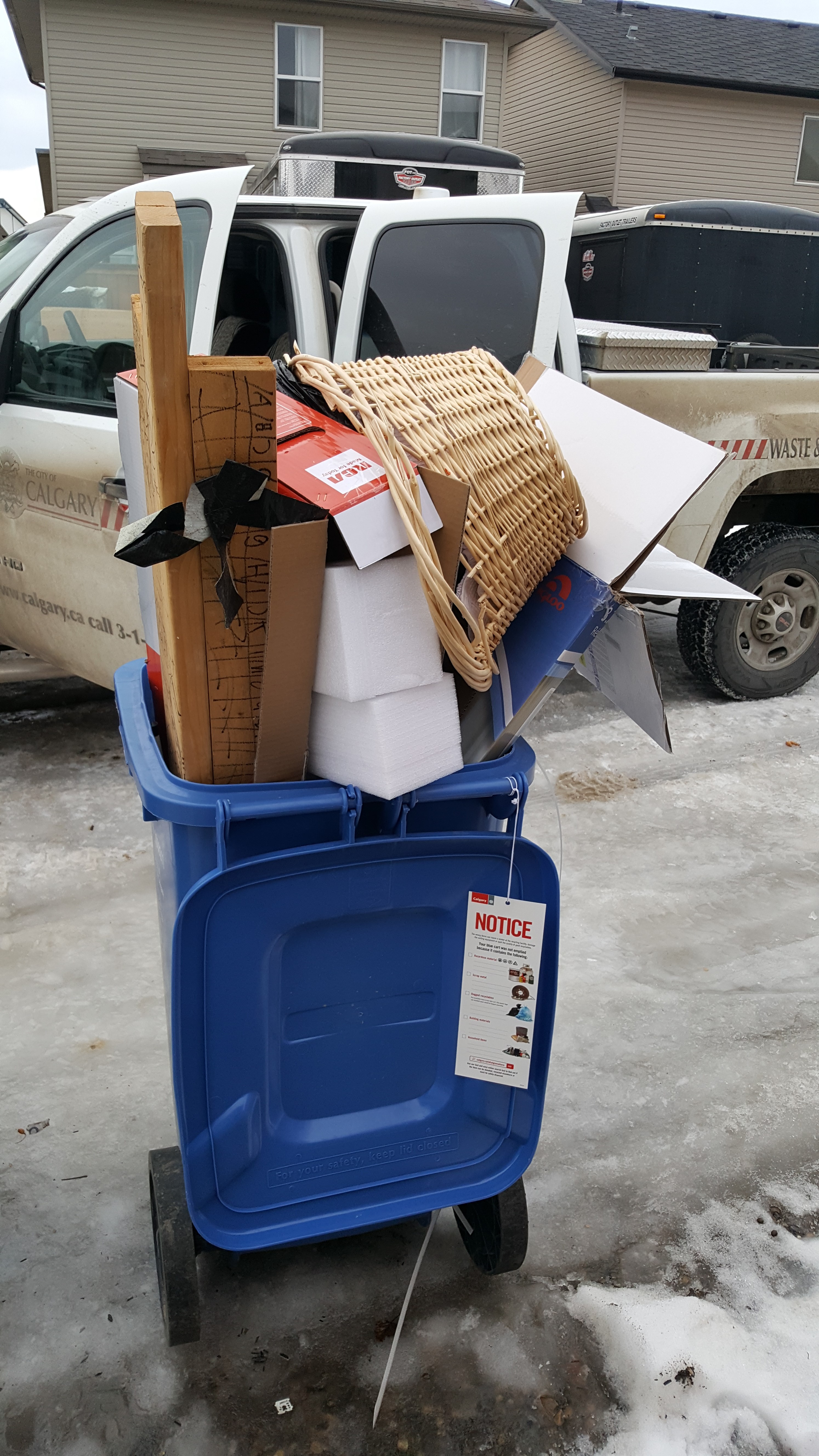
Contamination consequences
Putting the wrong items into your carts can result in:
- Your bin(s) may be left uncollected until the contamination issue is fixed.
- Bylaw enforcement and fines for repeat offenses.
- Increased program fees on your ENMAX bill.
Contamination: damage to equipment
Contamination can also cause major equipment damage at the facilities and inside the collection trucks. This results in:
- Expensive breakdowns: Costly repairs and replacements can cost thousands in taxpayers dollars.
- Wasted time and resources: When equipment breaks, the whole facility shuts down, causing collection trucks to be delayed and essential staff to stand idle.
- Less efficient service: Broken equipment means we can't process as much materials, limiting our ability to manage the city's overall waste effectively.
Equipment concerns
Equipment concern
Danglers and tanglers
Hoses and rope tangle up other recyclables into a ‘hairball’ mess.
Put used “stringy” items in the garbage.
Danglers like hoses and electrical cords get tangled up around the good recyclables creating a giant ‘hairball’. This clogs the entire sorting line and creates costly delays.
Equipment concern
Scrap metal like frying pans, pipes and household items
Metal household goods damage sorting equipment and creates work stoppages.
Donate used metal household goods or put in the garbage.
Large pieces of metal are too unwieldy and dangerous to go in the recycling as they jam up equipment, rip apart conveyor belts and cause costly delays.
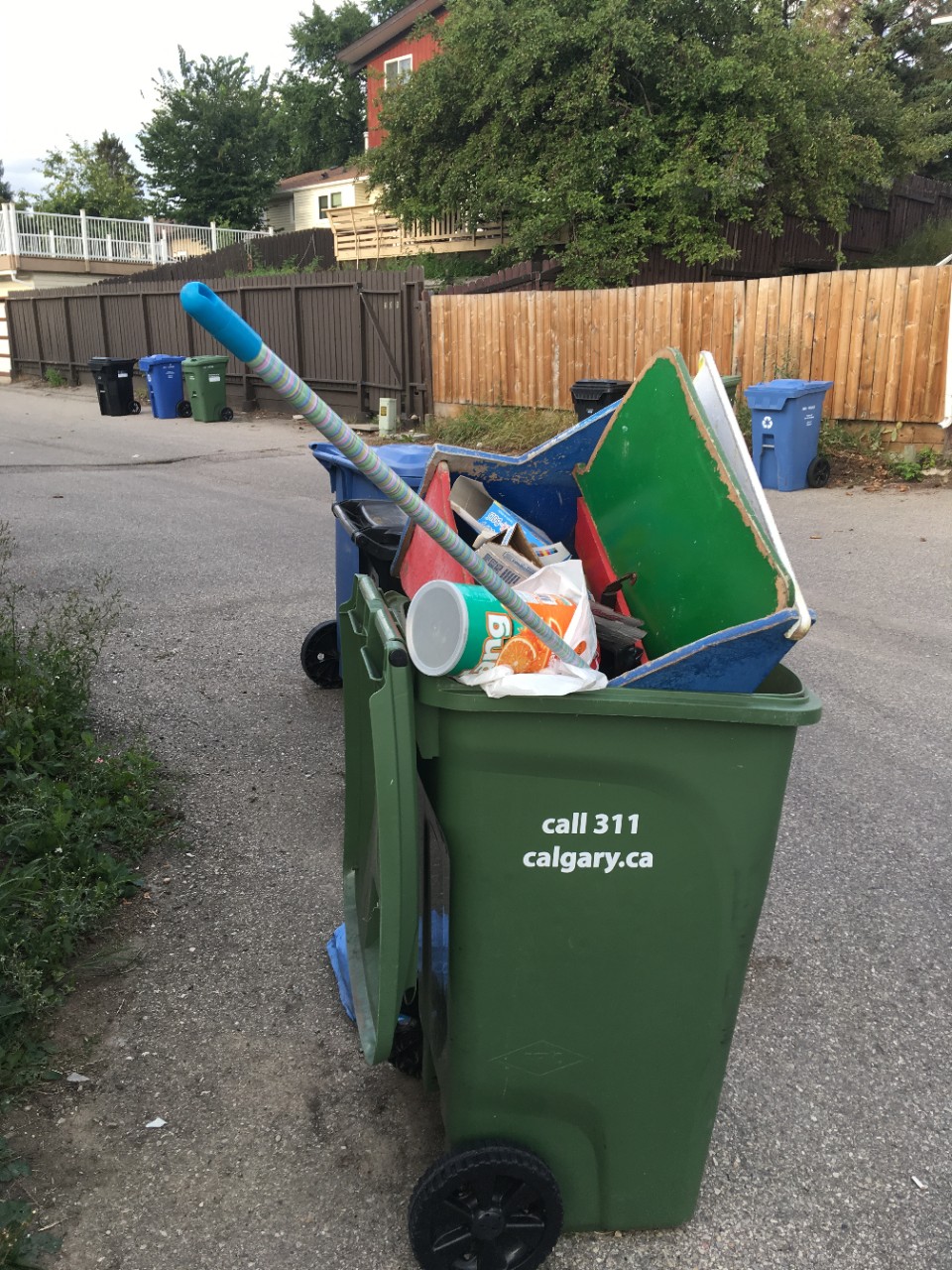
Did you know?
Contamination applies to all three of your bins. There are some items that don’t belong in any cart:
Contamination: improperly prepared materials
For recycling and composting programs to work best, quality materials are needed for the end manufacturers. That means the compost can’t have plastic bits in it and recyclables must be empty and clean.
Preparing your items the right way will make sure these materials can be turned into something new to be used again.
Improper preparation
Improper preparation
Plastic bags in the compost
Plastic bags used in the green cart cause major contamination issues.
Use certified compostable bags only for the green cart.
Plastic is the #1 problem in the green cart. They do not breakdown and end up leaving plastic bits in the finished compost.
Improper preparation
Food still in packaging
Food left inside packaging contaminates the finished compost.
Separate food out from packaging before putting food scraps into the green bin.
Food still left in the packaging doesn’t get composted or recycled. The entire package ends up in the landfill.
Improper preparation
Bagged recyclables
Recyclables must be loose (unbagged) for recycling.
Do not use blue bags or garbage bags for your recycling.
Recyclables need to be loose (unbagged) so the machines at the recycling facility can sort them properly into the different categories.
What can and can't go in your waste carts
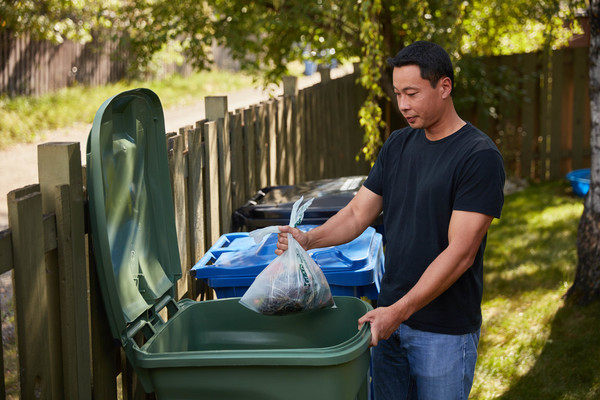
Items for green cart
View what items can't go into your green cart for compost.
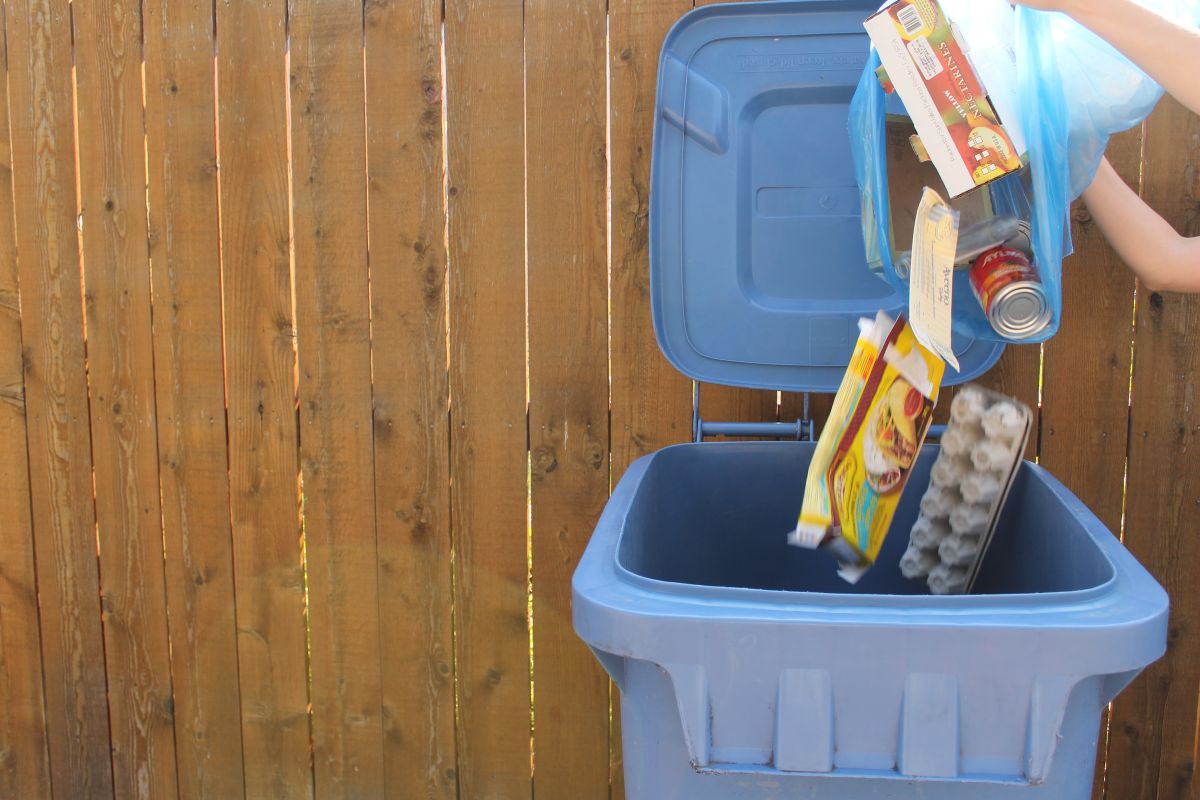
Items for blue cart
View what items can and can't go into your blue cart for recycling.
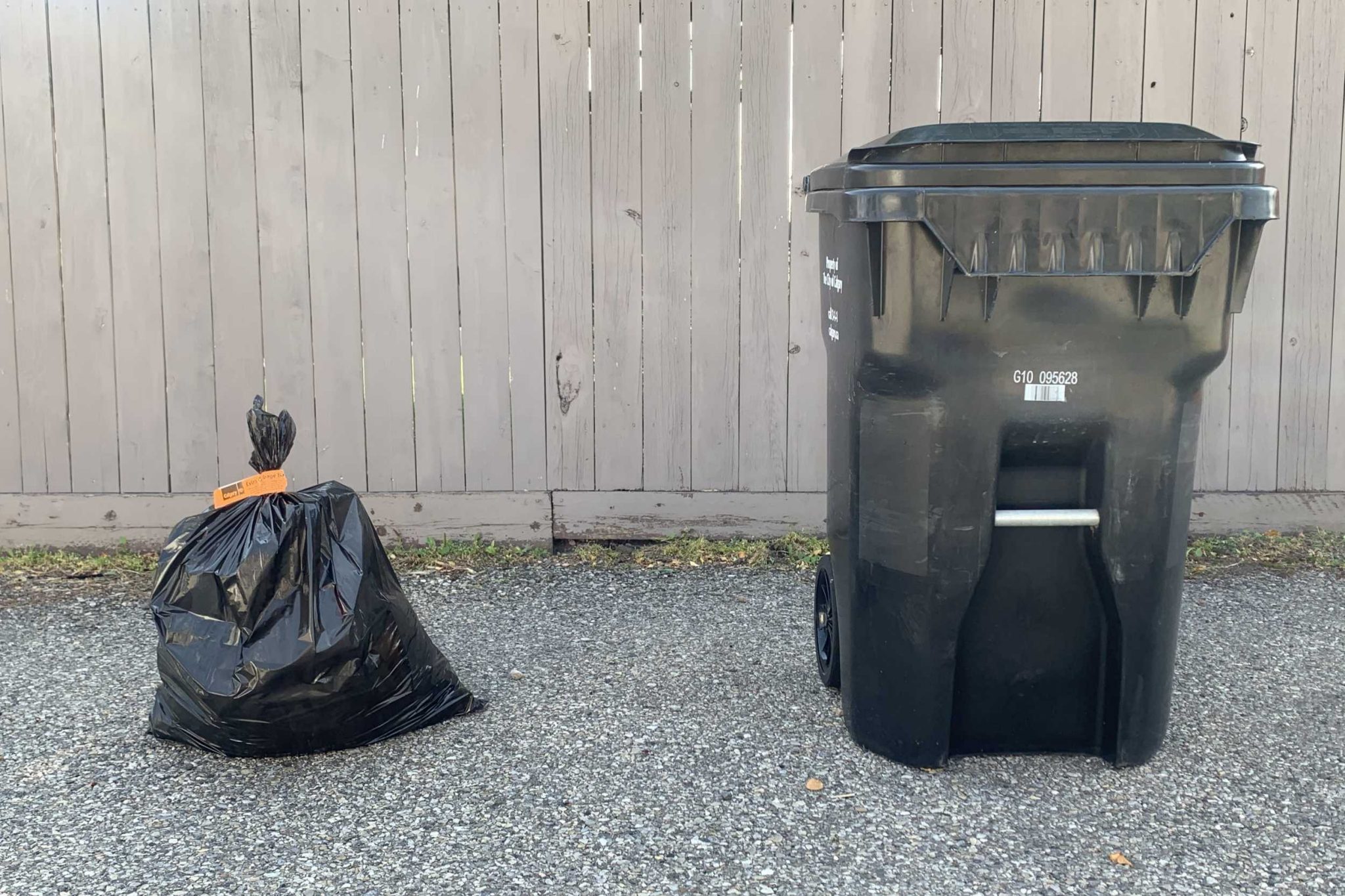
Items for black cart
View what items can and can't go into your black cart for garbage.
Cart spot check program
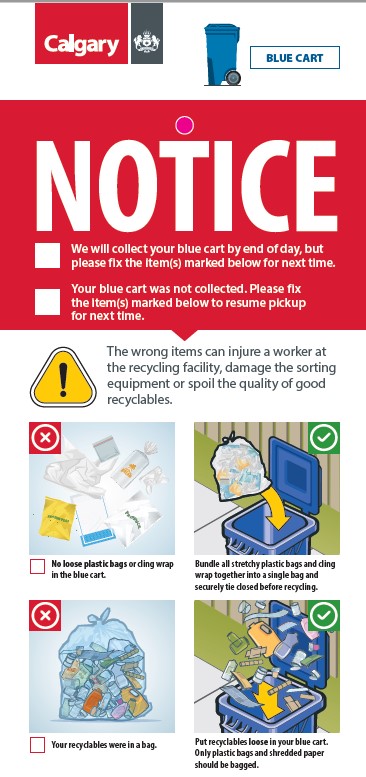
The City conducts over 200,000 bin checks each year to make sure the right items are going into the right bins. The program allows us to see how Calgarians are using their bins in real-time and to provide direct feedback at the household level. Through these spot checks we help Calgarians learn how to sort their waste properly and lower overall contamination rates for the carts.
How spot checks work:
- If an incorrect item is spotted, it may be removed and a tag is left on the cart to notify the household of the problem.
- If you receive a notice tag on your cart, make sure to follow the instructions on how to fix it for next time.
- Door knockers may also be in your neighborhood to answer any waste and recycling questions you may have and hand out brochures.

